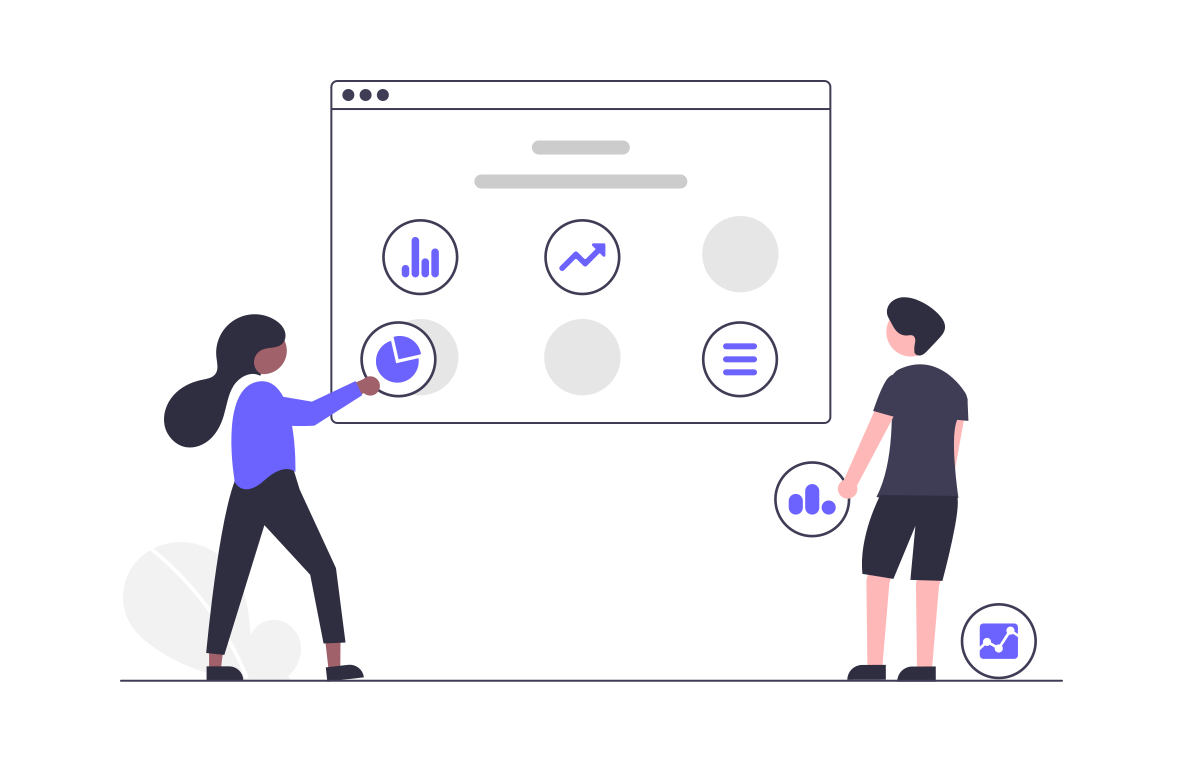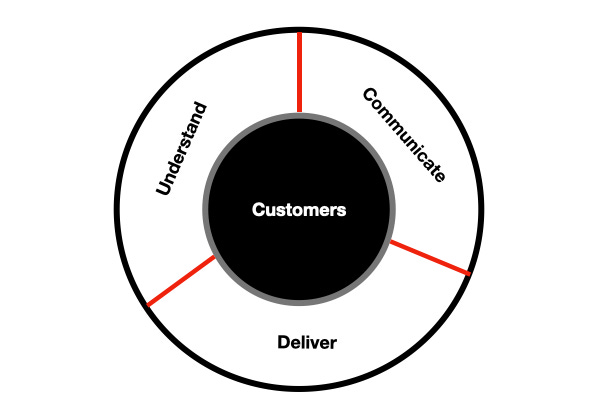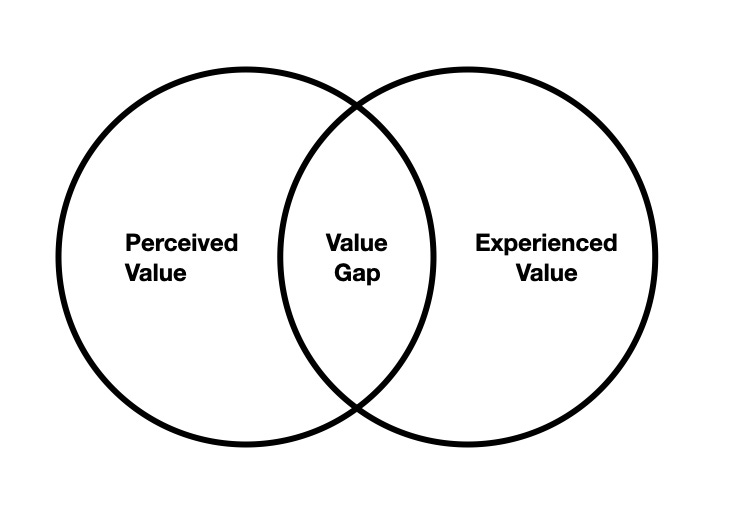Product-Led Growth Model for Product Managers
Growth is not convoluted or magical. It's very simple : Measure. Test. Experiment.
What is product-led growth?
Product-led growth describes a business strategy that places a company’s software at the center of the buying journey — and often at the center of the broader customer experience. A product-led growth strategy counts on the product itself — its features, performance, and virality — to do much of the “selling.”
On the surface-level, Product-Led Growth may look like a simple model for your buyer to try before they buy.
However, if we look deeper, Product-Led Growth is a completely new way of growing a SaaS business.
The Two Main Benefits of Product-Led Growth
Product-led businesses have an unfair advantage and enjoy access to a dominant growth engine and significantly lower Customer Acquisition Costs (CACs).
1. Dominant Growth Engine
Product-led businesses tend to scale faster than their competitors in two powerful ways:
Wider top-of-funnel. A free trial or freemium model opens up your funnel to people earlier in the customer journey. This is powerful because, instead of prospects filling out your competitor’s demo requests, they’re evaluating your product.
Rapid global scale. While your competitors are busy hiring new sales reps for each region under the sun, you can focus on improving your onboarding process to service more customers around the world in a fraction of the time.
2. Significantly Lower Customer Acquisition Costs
Free software also builds a moat around your business in three powerful ways:
Faster sales cycles: By having your prospects onboard themselves, you can significantly reduce your prospect’s time-to-value and sales cycle. Once people experience the value of your product, the next logical thing to do is upgrade. The quicker your users can accomplish a key outcome in your product, the quicker you can convert your free users into paying customers. The conversion rate is important to your growth strategy.
High revenue-per-employee (RPE): Software was always built to scale well, but with a product-led approach, you’re able to do more with fewer people on your team. Less hand-holding means higher profit margins per customer. Just take a look at Ahrefs in 2019. They have a $40 million ARR business with 40 employees.
Better user experience: Since your product is built for people to onboard themselves, people can experience meaningful value in your product without any hand-holding.
The benefits of a product-led GTM strategy don’t stop there. According to OpenView, product-led businesses are valued more than 30% higher than the public-market SaaS Index Fund.
What does product-led growth mean for product managers?
In a traditional SaaS company, product management is often tactically driven by requests from (large) sales prospects. Product managers sometimes have little autonomy as the sales team mostly controls the roadmap.
In a product-led world, the product sits at the top of the funnel to acquire customers rather than at the end. All teams contribute to the product from their perspective.
The product manager has a central role in collaborate, coordinate and communicate with all teams to create a coherent, compelling product with a great experience.
This is very similar to how product management in B2C companies has been operating for years.
Traditional SaaS products built as a reaction to sales requests often end up with many features that only very few customers use.
This may lead to clutter and a confusing experience for customers who don’t know what these features are for (or a mass of cryptic configuration options).
In a product-led world, the focus is on letting the core functionality shine, so clutter must be eliminated. This leads to a much better experience for all customers.
Components of product-led growth strategy:
The product is your key channel for marketing
The product should have a viral effect and prompt users to share it with others
Marketers don’t just own “getting people in the door”—they or collaborate in sales processes, user onboarding, and retention too
You should prioritize the user experience above all else
You should prioritize more self-service funnels and training before making new hires in customer-facing roles
You should regularly run growth-related experiments
You should capture product usage activity to drive personalized onboarding and upgrading sequences
You should segment users and tailor the buyer journey
Paywalls do not appear until the customer has seen the real value
Classic examples of product-led growth:
Slack
Dropbox
Typeform
MailChimp
InVision
How Does The Product-Led Growth Model Work?
Product Led Growth is a life raft that will save you from the flood of rising customer acquisition costs and decreasing willingness to pay for your product. In order to build a successful product-led business, you need to understand what value you bring to the table for your customers. Then you need to make sure you communicate that value to your customer in a way that is relevant to them. Once you communicate your value, you need to make sure you deliver on that value.
As you can see in the graph, each step builds on the other:
The Three Elements You Need To Master Product-Led Growth
In order to build a strong product-led foundation, you need these three elements.
Step 1: Understand Your Value
Most technology companies get caught up in the features and don’t really know why people buy their products. So, they create bland headlines that read, “We sell live-chat software for website and mobile support.” From the copy, we know what this business sells, but why choose one option over another? The copy assumes we know the outcome that live chat software solves for.
To build a successful product-led business, you need to understand the three main outcomes that motivate the purchase of your product.
Functional Outcome: the core tasks that customers want to get done
Emotional Outcome: how customers want to feel or avoid feeling as a result of executing the core functional outcome
Social Outcome: how customers want to be perceived by others by using your product
The more in tune you are with what your customer wants, the easier it is going to be for you to communicate the value to your buyer and eventually deliver on your promise.
In our experience consulting for SaaS clients, we find that most companies breeze by this one step, but we encourage you not to do the same as it’s arguably the most important step.
Step 2: Communicate the Perceived Value of Your Product
Communicating your value is at the crux of a Product-Led Growth strategy. Sales-led companies love to hide their pricing behind closed doors, asking potential buyers to request the price. Product-led companies eliminate this unnecessary friction with up-front pricing for most starter plans.
As a result, one of the most common “side projects” when launching a free trial or freemium model is rehauling the pricing page. Why?
For companies transitioning from a sales-led to product-led business, most previously hid their pricing. Others required businesses to pay for specific features that are now given away for free as an incentive to encourage signups for free accounts.
In a product-led business, your revenue and customer acquisition model are married together. (It’s an arranged marriage, but a marriage nonetheless.) In a sales-led business, the revenue and customer acquisition models are separated.
A sales-led business can bank on relationships to sell large contracts. In a product-led company, your customer acquisition model is built around your product. If your product sucks, you’re not making payroll this month.
If your revenue model is confusing, the number of people signing up for your free trial or freemium model will take a hit. This is why you need to dial in your acquisition and revenue models.
Lastly, we need to make sure we deliver on our promise.
Step 3: Deliver on What You Promise
Do you have a friend or family member who exaggerates their experiences? I know I do. After listening to them for a while, do you find it hard to trust what they say? I can hear you say “yes” from a mile away.
The same thing applies when selling software. What we promise in our marketing and sales is the perceived value. What we deliver in our product is the experienced value. Ideally, the perceived value aligns with the experienced value.
Everyone is happy in this scenario - what we signed up for does exactly what we envisioned. But this is rarely the case. Most companies struggle with overpromising and under-delivering.
It’s one reason why product-led businesses are booming. People want to “try before they buy” and experience your value proposition. If you keep your word, it’s a great way to build trust and sell your product. If you fail to deliver, your user experiences a nasty value gap.
The bigger your value gap, the leakier your funnel. You’ll see users sign up but never return to your product. In our experience, the tally could be as high as 40-60% of users who sign up for your product and never come back after the first visit.
In a product-led business, tackling your value gap can be the single, most profitable lever you can pull. It will help you launch and build a free trial or freemium model that (actually) turns users into customers.
If you can understand, communicate, and deliver on your value quickly, you’ll be able to build a strong foundation for your product-led business.
Minimizing Friction
When there is friction, there is limited use. This friction can then spill over into how it manifests in the product. The sign-up process may become overly complex, there may be a lack of onboarding experience or activation training to get new users up to speed more quickly, and you may be asking users to do too much too soon. Additionally, there could be too many unnecessary steps in the process, as well as other limitations.
To help identify all of the above points of friction, you need to build a good customer team and use analytics tools to help find these friction points within the usage patterns of the customers. If you do not identify these issues and you don't address the user onboarding process, you can limit your product's growth.
Driving Demand
So how did companies like Slack and Dropbox drive customer acquisition, retention, and expansion? They relied on product features and usage and then used these two primary factors to grow faster with much less cash. However, having these great features isn't going to be all you need. The customers need to know that you have them, and they need to be able to easily access them and use them effectively for this kind of demand-driven growth strategy to work.
Think about what features your customers need and find a way to fill those gaps in the market. Remember, different users will have different needs, and there are going to be several different workflows, so what customers and needs will the product support?
Sales and Marketing
Product-led growth has the ability to ultimately change marketing conversations. While sales and marketing may have been operating independently in the past and separate from customer groups and the product. However, this strategy doesn't work. Instead, these two groups need to work together to leverage data-produced by-products for better sales conversions.







